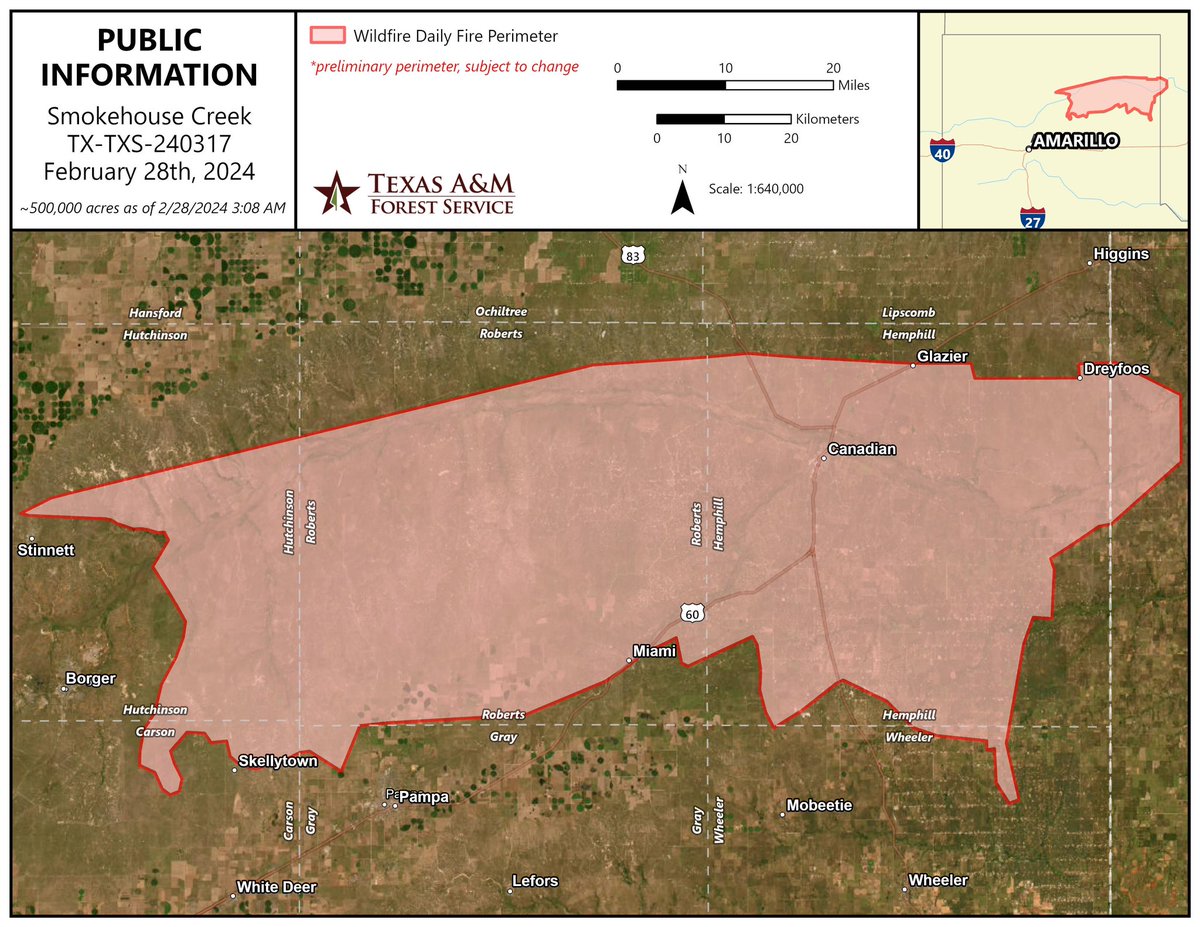CANADIAN, TX - San Angelo fire trucks have arrived in Canadian, according to a Canadian media outlet.
The fire department will be battling the blaze unfolding at the Smokehouse Creek fire, now the second-largest wildfire in Texas history.
Situated in Hutchinson County, just east of Canadian in Hemphill County, the Smokehouse Creek fire has expanded to an estimated 500,000 acres with zero percent containment, as reported by the Texas A&M Forest Service.
Although the fire's behavior has moderated with decreased winds, it remains actively burning, and the perimeter, subject to change, is outlined on a public information map.

Simultaneously, a powerful cold front sweeping through San Angelo is carrying smoke from multiple Panhandle wildfires, causing hazy conditions in West Central Texas. The National Weather Service San Angelo District forecasts that the front, currently moving through the region, will maintain smoky conditions into tomorrow morning.
There is no active wildfire directly threatening the West Central Texas area.
The Smokehouse Creek Fire joins the ranks of the thirty largest wildfires in Texas from 1988 to 2022. The largest, the East Amarillo Complex in 2006, covered 907,245 acres, while the Big Country Fire in 1988 stands as the third-largest, burning 366,000 acres.
With the escalating situation, the Texas Division of Emergency Management has activated various state emergency response resources. Over 95 firefighters from the Texas A&M Forest Service, heavy equipment, All Hazard Incident Management Team personnel, and multiple strike teams with personnel and fire engines are deployed. State agencies, including the Texas National Guard, Texas Department of Transportation, Texas Department of State Health Services, Texas Animal Health Commission, and Texas Commission on Environmental Quality, are also providing support.
Texans are urged to create emergency plans, limit activities that may cause sparks or flames, follow official directions and keep emergency supplies accessible. For information on wildfire safety, residents can visit TexasReady.gov and tfsweb.tamu.edu.
Subscribe to the LIVE! Daily
Required






Post a comment to this article here: